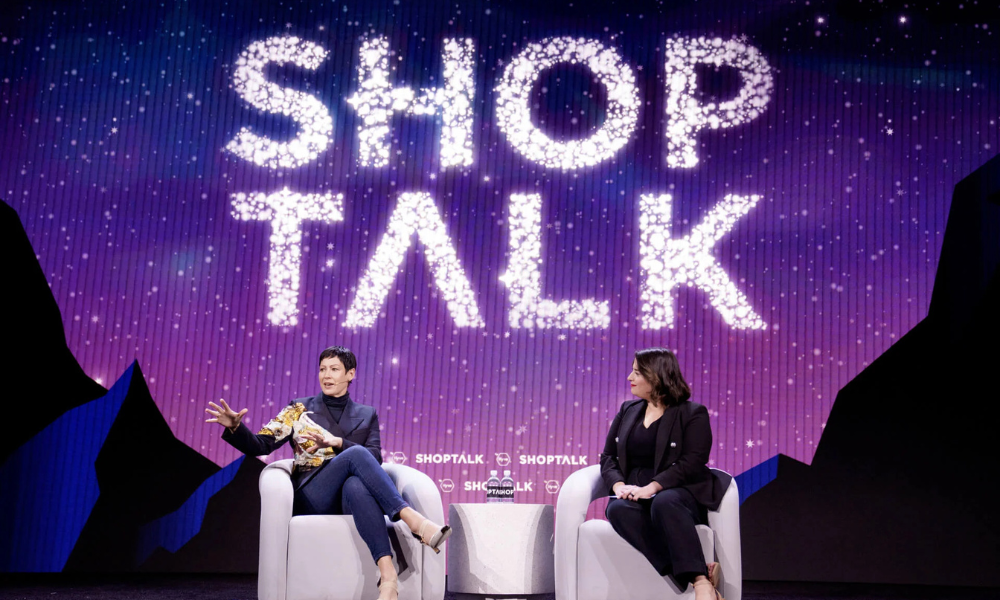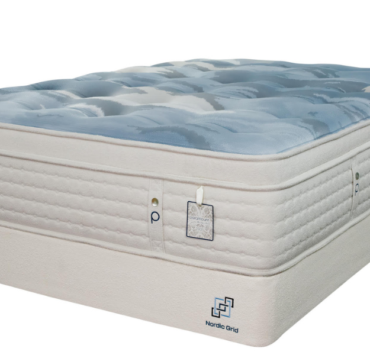Imagine if there was an engine room for the retail industry — a space humming with ideas, innovations and strategies ready to fuel the next era of customer engagement.
This year’s Shoptalk Fall 2024 in Chicago felt exactly like that, a place where every lever pulled and gear turned promised to redefine how retailers, big and small, can connect with customers in a tech-driven world.
From AI-driven personalization to immersive in-store experiences, the conference offered the bedding industry a peek behind the curtain, revealing tools and insights poised to reshape bedding retailers into destinations.
- Personalization as profit. Lowe’s is combining data and AI to boost revenue, staying relevant by deeply understanding customer needs.
- Tech with a human touch. Target’s blend of advanced tech with genuine service creates a meaningful, people-focused business model.
- Event-driven engagement. Michaels is transforming their stores into experiential spaces to boost customer loyalty.
Lowe’s — personalization as a revenue driver
Lowe’s is redefining how retailers use data and AI, creating personalized experiences that go beyond transactions. For newly appointed CMO, Jennifer Wilson, personalization isn’t just a marketing tactic; it’s essential for driving revenue and brand loyalty in an industry where most customers comparison shop before purchasing. With more than 65% of home improvement consumers labeled as “switchers” (those who aren’t loyal to one brand), Wilson sees an opportunity to become their top choice.
“The challenge for us as a brand is, how do you get switchers to take one more trip around the store with you or add one more item to their cart?” she asks. Wilson views loyalty as consistency, striving to make each experience valuable enough to draw them back, again and again. To do this, Lowe’s leverages both first-party and third-party data, which she sees as the “lifeblood” of impactful marketing. “We’re always talking to customers — online and in our stores — looking for the next big consumer trend.”
Wilson also sees a revival of in-real-life experiences, particularly for younger generations seeking brands that connect with their family priorities. “We hear from both millennials and Gen Z that when we’re relevant to their kids, we’re relevant to them.” Programs like Lowe’s children’s workshops reinforce this connection, positioning Lowe’s as a brand that values community and family engagement.
The Lowe’s approach translates easily to the bedding industry. Begin with customer data to tailor experiences and create value beyond discounts. Then, leverage IRL interactions to build loyalty. By tuning into what resonates with customers — whether family-focused events or sleep wellness education — retailers can meet customers where they are and build a brand connection.
Target — tech with a human touch
For Target, growth and innovation hinge on the balance between cutting-edge technology and meaningful human interaction — a nuanced approach led by Christina Hennington, chief growth and strategy officer. Transitioning from overseeing Target’s commercial business to shaping its long-term growth, Hennington is guiding Target’s evolution, ensuring that technology meets operational needs and enhances the customer experience in genuine ways.
A prime example of this approach is Target’s new “store companion” feature. Powered by generative AI, it provides frontline team members with a real-time pocket-assistant, allowing them to offer more informed, efficient service. “It’s an opportunity to give our frontline team members an educated assistant at their fingertips to help them do their job better.”
Hennington’s commitment to ongoing, customer-driven improvement is also evident in the evolution of Target’s “Drive Up” service. Launched in 2017, the service has become a cornerstone of Target’s customer experience, updated with features like Starbucks pickup and drive-up returns. “There’s been a constant drumbeat of change in pursuit of evolving the guest experience,” Hennington notes. “But we try to balance what technology can do and the practicality of rolling it out to 400,000 team members. Bringing together humanity and technology is at the forefront of our approach.”
Data is another critical component of Target’s strategy, guiding both immediate decisions and long-term planning. Hennington emphasized the importance of “actionable insights” over mere data collection, focusing on understanding customer behaviors and preferences. Her teams analyze everything from call center interactions to guest insights, identifying patterns that inform both immediate solutions and systemic improvements.
Hennington also highlighted Target’s commitment to both digital and in-store experiences as a long-term growth strategy. “Digital for us is very much the front door to Target,” she shared, underscoring their goal to make online interactions as seamless and enjoyable as in-store visits.
Michael’s — experiences that inspire
For Michaels, the in-store experience is more than just a shopping trip — it’s a creative, magical journey for customers. Heather Bennett, executive vice president of marketing and e-commerce, explains that Michaels is transforming their stores into community hubs, hosting events that bring people together in meaningful ways. “Our customers come to our stores looking for inspiration,” Bennett says, adding that everything from store layouts to event programming is designed to spark creativity and connection.
Michaels’ recent introduction of in-store birthday parties and adult “Make and Mingle” events is a testament to this experiential focus. While the concept is still evolving, these gatherings have proven to be a draw for families and communities alike, helping create memorable interactions that go beyond traditional retail. “We’ve hosted over 1,600 birthday parties, welcoming 14,000 children to date,” Bennett notes, emphasizing the importance of a seamless, enjoyable experience.
Executing events requires careful planning, from standard operating procedures to specialized technology that streamlines the booking process. Michaels integrated these events into its business model by starting with small-scale tests in select locations. “Word of mouth and customer experience will be the way we build revenue,” she says, highlighting the importance of positive feedback to drive future growth.
It’s clear that some brands are reshaping the retail landscape by turning stores into destinations that prioritize connection, creativity and customer experience. For bedding and furniture retailers, these strategies offer a roadmap to elevate in-store engagement through personalized service, community-focused events and technology that enhances — rather than replaces — human touch.
Which insights will you embrace to transform your store into a place customers seek out, not just for products, but for memorable experiences that inspire loyalty and foster lasting relationships?




